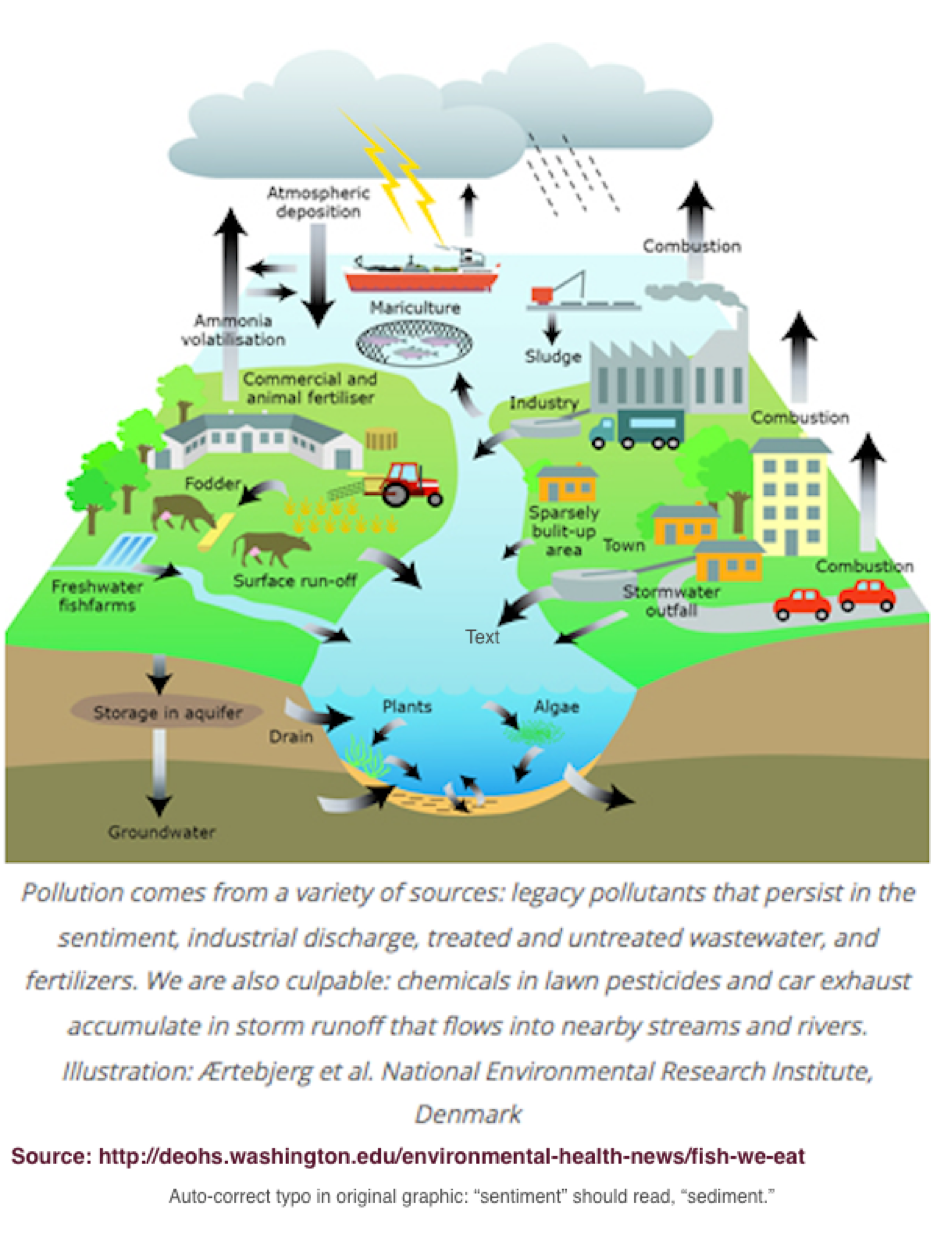NOTE: This is an edited version of portions of Appendices 2 & 3 of the “Revised Stealth Syndromes Study Protocol as approved by the University of California San Francisco Medical School Committee on Human Research.
This ad-free article is made possible by the financial support of the
Center for Research on Environmental Chemicals in Humans: a 501(c)(3) non-profit.
Please consider making a tax-deductible donation for continued biomedical research.
Standards and Sourcing (From Appendix 2)
Fish not allowed. Water pollution and microplastics also prohibit its inclusion.
Rationale (From Appendix 3)
Fishy business
Fish contamination occurs in growth, harvest, processing, and sales. But because edible fish grow in polluted oceans and freshwater lakes, rivers and streams, they can accumulate contaminates from many sources in their natural environment.
See also:
- Avoiding Microplastics, biosolids and nano particles
- Sourcing the Menu: Water & fertilizers: Ubiquitous contamination sources.
- U.S. Agency Study Finds Toxic Chemicals in Fish is Widespread
- Chemicals in Fish
- Bioaccumulation of super‐lipophilic chemicals in fish
Because chemical contamination grows with time, this set of recommendations from the state of Washington recommends eating smaller, younger fish. It also recommends cutting away the fatty portions of fish such as salmon because some chemicals are lipophilic. Other contaminates such as methyl mercury, are water soluble.
Beware of farmed fish
Studies have determined that farmed fish are subject to contamination by multiple chemicals (Friends Don’t Let Friends Eat Farmed Salmon). Feed is one suspect as are chemicals and pharmaceuticals added to keep fish as healthy as possible in crowded pens.
